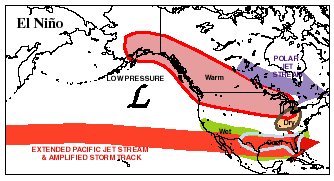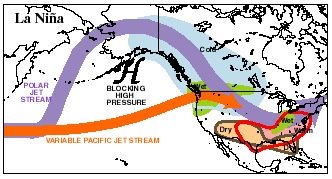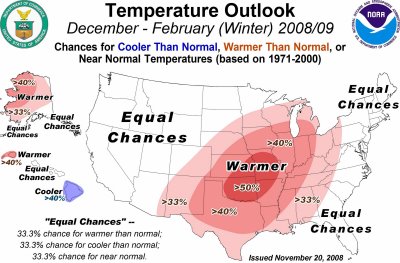The NOAA El Nino Forecast for Winter 2009-2010 has been released. In the years I can remember that were strong El Nino, it wasn’t ideal for skiers. What meteorologists call a “zonal flow” develops. Big wet storms pound the west coast and come straight across the country. When that flow is really strong cold air gets bottled up in Canada making only short appearances south of the US border.
When El Nino isn’t as strong, it can be good. Honestly I’m not sure what the difference is between a weak El Nino and La Nina. They may be the same thing. In that case, the systems come across and the cold air is more likely to be involved in New York and the northeast.



 How often do you see this all in one forecast?
How often do you see this all in one forecast?


